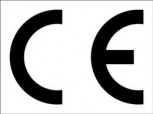CE marking in the construction industry
CE stands for Communauté Européenne (although it is sometimes taken to stand for Conformité Européenne). CE marking signifies that a product complies with relevant safety, health or environmental regulations across the European Economic Area (EEA). The EEA consists of the member states of the EU and the European Free Trade Association countries; Iceland, Liechtenstein and Norway.
CE marking of construction products was first introduced in the Construction Products Directive (CPD) in 1988. The Construction Products Regulations (CPR) made it mandatory for certain products in 2011 and 2013, and from 1 July 2014, made CE marking mandatory for structural steelwork and aluminium. There have been many changes to the requirements under CE markings which also vary depending on the types of products. As an example, initially if a product was fully manufactured, CE marked and ready to place on the market before 1st January 2021, it could still be sold in Great Britain with a CE marking even if covered by a certificate of conformity issued by a UK body before 1st January 2021. However, these goods needed to be placed on the market before 31st December 2022.
The legislation initially required that the UKCA marking was placed on a label affixed to the product or on a document accompanying the product until 31st December 2023. However, an extension was been defined with the new deadline being 31st December 2027 for certain products. Until that date, it will still be possible to attach a label to the product when required. This will apply for most goods requiring UKCA marking, even though there will be different rules for the various categories of products. In January 2023, limits to the cases where UKCA certification could be used were added, and in December 2023, a derogation on how to apply the UKCA marking, up to the 1st of January 2023 the need to use the new UKCA applied only in certain circumstances.
Finally in September 2024, a Building Safety Statement made by Parliamentary Under Secretary of State for Building Safety and Homelessness on 2 September, 2024 included an update on the timeframe for recognition of the CE Mark. In summary, the statement confirmed that CE marking continues to be accepted past 30 June 2025 for construction products, though the Government committed to system wide construction product regulatory reform, UKCA marking will remain a valid and accepted regulatory mark. The Government will explore the long-term future of CE/UKCA marking as part of this regulatory reform and any subsequent changes to the recognition of CE marking would be subject to a minimum 2-year transitional period.
From the 1st January 2028, when possible (e.g. if the size of the product allows for it), the marking shall be placed directly on the product.
This is not the same as the Kitemark, which indicates that a product has been independently tested by BSI (the British Standards Institute) to confirm that it complies with the relevant British Standard, and have licensed the product manufacturer to use the Kitemark.
Note: The UKCA (UK Conformity Assessed) marking is a UK product marking used for certain goods being placed on the market in Great Britain (England, Wales and Scotland). It was introduced following Brexit to replace CE marking. An additional mark, UKNI, will be used in Northern Ireland. For more information see: BBA becomes an Approved Body for UKCA Marking.
[edit] Related articles on Designing Buildings
- Accreditation body.
- BBA becomes an Approved Body for UKCA Marking.
- Brexit standards, products and regulatory updates.
- British Standards.
- BS EN 3.
- BS EN 13501-1.
- CLC urges inclusion of fluctuations provisions in contracts.
- Construction products regulations.
- Deadline for CE marked products extended to 1 January 2023.
- European Technical Approval.
- Examining the 2021 construction materials shortage.
- How to check certification.
- Kitemark.
- Product labelling.
- Radio frequency identification.
- Standards.
- The Construction Industry Council summarises what to expect from the Construction Products Regulations.
- Third party accreditation.
- United Kingdom Accreditation Service UKAS.
- UK Brexit transition and uncertainty for the heating industry.
- UKCA mark transition extension for construction products requested.
- UK Conformity Assessed UKCA.
Featured articles and news
One of the most impressive Victorian architects. Book review.
RTPI leader to become new CIOB Chief Executive Officer
Dr Victoria Hills MRTPI, FICE to take over after Caroline Gumble’s departure.
Social and affordable housing, a long term plan for delivery
The “Delivering a Decade of Renewal for Social and Affordable Housing” strategy sets out future path.
A change to adoptive architecture
Effects of global weather warming on architectural detailing, material choice and human interaction.
The proposed publicly owned and backed subsidiary of Homes England, to facilitate new homes.
How big is the problem and what can we do to mitigate the effects?
Overheating guidance and tools for building designers
A number of cool guides to help with the heat.
The UK's Modern Industrial Strategy: A 10 year plan
Previous consultation criticism, current key elements and general support with some persisting reservations.
Building Safety Regulator reforms
New roles, new staff and a new fast track service pave the way for a single construction regulator.
Architectural Technologist CPDs and Communications
CIAT CPD… and how you can do it!
Cooling centres and cool spaces
Managing extreme heat in cities by directing the public to places for heat stress relief and water sources.
Winter gardens: A brief history and warm variations
Extending the season with glass in different forms and terms.
Restoring Great Yarmouth's Winter Gardens
Transforming one of the least sustainable constructions imaginable.
Construction Skills Mission Board launch sector drive
Newly formed government and industry collaboration set strategy for recruiting an additional 100,000 construction workers a year.
New Architects Code comes into effect in September 2025
ARB Architects Code of Conduct and Practice available with ongoing consultation regarding guidance.
Welsh Skills Body (Medr) launches ambitious plan
The new skills body brings together funding and regulation of tertiary education and research for the devolved nation.
Paul Gandy FCIOB announced as next CIOB President
Former Tilbury Douglas CEO takes helm.
























